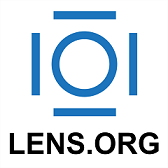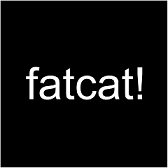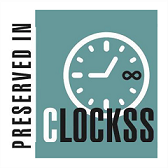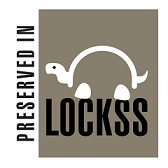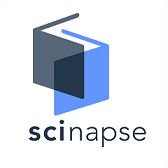Leadership Communication and Healthcare Employee Performance During Crises: A PLS-SEM Study of Level-Four Hospitals in Kenya
Abstract
The outbreak of the COVID-19 pandemic has focused interest on the critical role that leadership can play during times of crisis. Although the subject of healthcare employees’ performance in crisis has received much scholarly probing, the potential contribution of leadership communication towards circumventing the daunting challenges experienced during such times has not been sufficiently documented. Therefore, this study evaluated the role of leadership communication on employee performance during times of crises, deploying a Partial Least Squares Structural Equation Modelling (PLS-SEM) framework. It was anchored on the transformational leadership theory proposed by Bass. The study targeted 1193 healthcare employees working in level-four hospitals in Kenya. From this population, a sample of 248 healthcare employees was calculated using the Taro Yamane formula. Stratified sampling was then used to select specific employees representing various sections of each hospital, including heads of section, nursing, dental, laboratory, public health, health records, clinical officers, medical officers, and physiotherapy. The findings showed that level-four hospitals emphasised leadership communication, effects of engagement clarity, and authenticity during the COVID-19 pandemic, allowing employees to offer satisfactory healthcare performance. The PLS-SEM results affirmed that authenticity (b=0.261, p<0.05) and clarity (b=0.312, p<0.05), as leadership communication facets, were significant predictors of healthcare employee work performance during crises. The study concludes that leadership communication can be leveraged to improve healthcare employee work performance during crises. Therefore, healthcare stakeholders should enhance leadership communication mechanisms in level-four hospitals to strengthen healthcare employee performance during crises.
Downloads
References
Ali, S. K., Shah, J., & Talib, Z. (2021). COVID-19 and mental well-being of nurses in a tertiary facility in Kenya. PLOS ONE, 16(7), e0254074. https://doi.org/10.1371/journal.pone.0254074
Azzellino, G., & Bordoni, M. (2024). Transformational leadership: The key to reducing Intention to leave in nurses. Nsc Nursing, 3(4), 78- 85. https://doi.org/10.32549/opi-nsc-109
Bass, B. M. (1985). Leadership and performance beyond expectations. New York: The Free Press.
Britt, T. W., Shuffler, M. L., Pegram, R. L., Xoxakos, P., Rosopa, P. J., Hirsh, E., & Jackson, W. (2021). Job demands and resources among healthcare professionals during virus pandemics: A review and examination of fluctuations in mental health strain during COVID‐19. Applied Psychology, 70(1), 120-149. https://doi.org/10.1111/apps.12304
Chiwisa, C. (2024). The Role of Leadership in Crisis Management: A Literature Review. Journal of Human Resource and Leadership, 9(3), 48–65. https://doi.org/10.47604/jhrl.2844
Choge, E. J. (2020). Factors Affecting Employee Performance in the Health Sector: A Case of Kenyatta National Hospital (Doctoral dissertation, United States International University-Africa).
Choi, J. Y., Miao, C., Oh, I.-S., Berry, C. M., & Kim, K. (2018). Relative Importance of Major Job Performance Dimensions in Determining Supervisors’ Overall Job Performance Ratings. Canadian Journal of Administrative Sciences / Revue Canadienne Des Sciences de L’Administration, 36(3), 377–389. https://doi.org/10.1002/cjas.1495
Díaz, A., Jeffery, A., Cedeño, I., Pallaroso, Y., Jaramillo, G., Rodriguez, B. M., Wonsey, B., Zambrano, M., & Rodriguez, D. C. (2024). Community-Based Approaches to Respond to Epidemics and Natural Disasters in Coastal Ecuador. Sustainable Development Goals Series (pp. 195–207). Cham: Springer Nature Switzerland. https://doi.org/10.1007/978-3-031-53793-6_13
Farid, T., Iqbal, S., Khan, A., Ma, J., Khattak, A., & Ud Din, M. N. (2020). The impact of authentic leadership on organizational citizenship behaviours: the mediating role of affective-and cognitive-based trust. Front. Psychol. 11, 1975. 10.3389/fpsyg.2020.01975
Gachathi, S. N., Walekhwa, M., & Mugambi, J. (2024). Performance of Community Health Volunteers in the Delivery of Healthcare Services During the COVID-19 Pandemic in Nakuru, Kenya: A Cross-Sectional Analysis. Journal of Clinical Care and Medical Advancement, 2(1), 1–12. https://doi.org/10.58460/jcma.v2i1.68
Grobusch, M. P., Pikka Jokelainen, Wyllie, A. L., Gupta, N., José Ramón Paño-Pardo, Barac, A., Bulescu, C., Galadriel Pellejero-Sagastizábal, Goorhuis, A., F-Xavier Lescure, Effrossyni Gkrania-Klotsas, & Mora-Rillo, M. (2024). Marburg virus disease outbreak in Rwanda, 2024. Clinical Microbiology and Infection, 31(2), 161–163. https://doi.org/10.1016/j.cmi.2024.11.027
Gupta, N., & Sharma, V. (2016). Exploring Employee Engagement—A Way to Better Business Performance. Global Business Review, 17(3), 45S63S. https://doi.org/10.1177/0972150916631082
Hair, J. F. (2017). A Primer on Partial Least Squares Structural Equation Modelling (PLS-SEM). Sage.
Hair, J. F., Risher, J. J., Sarstedt, M., & Ringle, C. M. (2019). When to use and how to report the results of PLS-SEM. European Business Review, 31(1), 2-24. https://doi.org/10.1108/EBR-11-2018-0203
Hoedl, M., Bauer, S., & Eglseer, D. (2021). Influence of nursing staff working hours on stress levels during the COVID-19 pandemic. HeilberufeScience. https://doi.org/10.1007/s16024-021-00354-y
Hoffman, S. R., Gangan, N., Chen, X., Smith, J. L., Tave, A., Yang, Y., Crowe, C. L., dosReis, S., & Grabner, M. (2024). A step-by-step guide to causal study design using real-world data. Health Services and Outcomes Research Methodology, 25, 182–196. https://doi.org/10.1007/s10742-024-00333-6
Jawahar, I. M., Meurs, J. A., Ferris, G. R., & Hochwarter, W. A. (2008). Self-Efficacy and Political Skill as Comparative Predictors of Task and Contextual Performance: A Two-Study Constructive Replication. Human Performance, 21(2), 138–157. https://doi.org/10.1080/08959280801917685
Kathukumi, K., Maingi, Z., Jaika, S. N., Konyole, S. O., Tibbs, C. Y., & Odera, P. (2022). Social and psychological effects of COVID-19 pandemic among frontline healthcare workers in western Kenya. East African Medical Journal, 99(7). https://www.ajol.info/index.php/eamj/article/view/230691
Kim, S. S., Galinsky, E., & Pal, I. (2020). One kind word: Flexibility in the time of COVID-19. Families and Work Institute, 10.
Koopmans, L., Bernaards, C. M., Hildebrandt, V. H., Schaufeli, W. B., de Vet Henrica, C. W., & van der Beek, A. J. (2011). Conceptual Frameworks of Individual Work Performance. Journal of Occupational and Environmental Medicine, 53(8), 856–866.
Krijgsheld, M., Tummers, L. G., & Scheepers, F. E. (2022). Job performance in healthcare: a systematic review. BMC Health Services Research, 22(1). https://doi.org/10.1186/s12913-021-07357-5
Kwobah, E. K., Mwangi, A., Patel, K., Mwogi, T., Kiptoo, R., & Atwoli, L. (2021). Mental Disorders Among Health Care Workers at the Early Phase of COVID-19 Pandemic in Kenya; Findings of an Online Descriptive Survey. Frontiers in Psychiatry, 12. https://doi.org/10.3389/fpsyt.2021.665611
Lestari, R., Windarwati, H. D., & Hariyanti, T. (2025). Building Resilience in Organizations. Advances in Human Resources Management and Organizational Development Book Series, 151–168. https://doi.org/10.4018/979-8-3693-8457-2.ch006
Mao, Y., Kang, X., Lai, Y., Yu, J., Deng, X., Zhai, Y., Kong, F., Ma, J., & Bonaiuto, F. (2023). Authentic leadership and employee resilience during the COVID-19: The role of flow, organizational identification, and trust. Current Psychology, 42. https://doi.org/10.1007/s12144-022-04148-x
Men, L. R., Qin, Y. S., Fitzsimmons, A. B., DiStaso, M. W., & Heffron, E. (2024). An Integrated Framework for Exploring the Impact of Leadership Communication on Employee Trust During Disruptive Crisis Times. International Journal of Business Communication. https://doi.org/10.1177/23294884241226567
Moses, M. W., Korir, J., Zeng, W., Musiega, A., Oyasi, J., Lu, R., ... & Di Giorgio, L. (2021). Performance assessment of the county healthcare systems in Kenya: a mixed-methods analysis. BMJ Global Health, 6(6), e004707. https://doi.org/10.1136/bmjgh-2020-004707
Munyi, H. M., & Mabonga, G. N. (2024). Mental Health and Employee Performance in Kenyan Private Hospitals. A Case Study of Aga Khan University Hospital. African Journal of Emerging Issues, 6(19), 28– 45. https://ajoeijournals.org/sys/index.php/ajoei/article/view/710
Muthuri, R. N., Senkubuge, F., & Hongoro, C. (2020). Predictors of Health-Related Quality of Life among Healthcare Workers in the Context of Health System Strengthening in Kenya. Healthcare, 9(1), 18. https://doi.org/10.3390/healthcare9010018
Nkansah, D., Gyimah, R., Sarpong, D. A. A., & Annan, J. K. (2023). The Effect of Employee Engagement on Employee Performance in Ghana’s MSMEs Sector during COVID-19: The Moderating Role of Job Resources. Open Journal of Business and Management, 11(01), 96–132. https://doi.org/10.4236/ojbm.2023.111007
Nowrouzi-Kia, B., Sithamparanathan, G., Nadesar, N., Gohar, B., & Ott, M. (2022). Factors associated with work performance and mental health of healthcare workers during pandemics: a systematic review and meta- analysis. Journal of Public Health, 44(4), 731- 739. https://doi.org/10.1093/pubmed/fdab173
Ogello, V., Thuo, N., Okello, P., Wairimu, N., Mwangi, P., Maina, G., Mwenda, H., Mutua, P., Kinuthia, J., Ongeri, L., Mugo, N., & Ngure, K. (2024). The Effects of the COVID-19 Pandemic on Healthcare Providers’ Mental Health: Experiences at Kenyatta National Hospital, Kenya. Behavioural Sciences, 14(5), 351–351. https://doi.org/10.3390/bs14050351
Oliwa, J., Mazhar, R. J., Serem, G., Khalid, K., Amoth, P., Kiarie, H., Osman Warfa, Carl Otto Schell, Baker, T., English, M., & McKnight, J. (2023). Policies and resources for strengthening of emergency and critical care services in the context of the global COVID-19 pandemic in Kenya. PLOS Global Public Health, 3(7), e0000483–e0000483. https://doi.org/10.1371/journal.pgph.0000483
Pal, I., Galinsky, E., & Kim, S. (2021). Employee health and well-being after a crisis – re-imagining the role of workplace inclusion. Community, Work & Family, 25(1), 1–33. https://doi.org/10.1080/13668803.2021.1987859
Popa, I., Ștefan, S. C., Olariu, A. A., Popa, Ș. C., & Popa, C. F. (2022). Modelling the COVID-19 Pandemic Effects on Employees’ Health and Performance: A PLS-SEM Mediation Approach. International Journal of Environmental Research and Public Health, 19(3), 1865. https://doi.org/10.3390/ijerph19031865
Risley, C. (2020). Maintaining Performance and Employee Engagement during the COVID-19 Pandemic. Journal of Library Administration, 60(6), 653– 659. https://doi.org/10.1080/01930826.2020.1773716
Rosenström, T., Härmä, M., Kivimäki, M., Ervasti, J., Virtanen, M., Hakola, T., ... & Ropponen, A. (2021). Patterns of working hour characteristics and risk of sickness absence among shift-working hospital employees: a data-mining cohort study. Scandinavian Journal of Work, Environment & Health, 47(5), 395. https://doi.org/10.5271/sjweh.3957
Sagherian, K., Steege, L. M., Cobb, S. J., & Cho, H. (2020). Insomnia, fatigue and psychosocial well‐being during COVID‐19 pandemic: A cross‐sectional survey of hospital nursing staff in the United States. Journal of Clinical Nursing, 32(15- 16). https://doi.org/10.1111/jocn.15566
Shrotryia, V. K., & Dhanda, U. (2020). Development of employee engagement measure: experiences from best companies to work for in India. Measuring Business Excellence, 24(3), 319-343. https://doi.org/10.1108/mbe-07-2019-0071
Sinclair, R. R., Allen, T., Barber, L., Bergman, M., Britt, T., Butler, A., Ford, M., Hammer, L., Kath, L., Probst, T., & Yuan, Z. (2020). Occupational Health Science in the Time of COVID-19: Now More Than Ever. Occupational Health Science, 4(1-2), 1–22. https://doi.org/10.1007/s41542-020-00064-3
Umbetkulova, S., Kanderzhanova, A., Foster, F., Stolyarova, V., & Cobb-Zygadlo, D. (2024). Mental health changes in healthcare workers during COVID-19 pandemic: A systematic review of longitudinal studies. Evaluation & the health professions, 47(1), 11-20. https://doi.org/10.1177/01632787231165076
Yamane, T. (1967). Statistics: An Introductory Analysis (2nd ed.). New York: Harper and Row.
Yusuf, M. S. A., Man, N., Haris, N. B. M., Ismail, I. A., Yee, S. S., & Bakar, T. H. S. T. A. (2024). Improvement model framework of urban agriculture program in Malaysia: PLS-SEM analysis. Sarhad Journal of Agriculture, 40(1), 171-186. https://nja.pastic.gov.pk/SJA/index.php/SJA/article/view/51
Copyright (c) 2025 Eileen Atieno Rasowo, Sylvia Ndanu Mutua

This work is licensed under a Creative Commons Attribution 4.0 International License.












